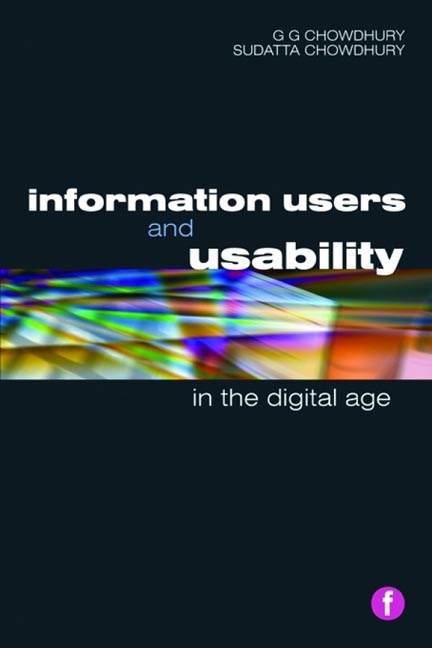Book contents
- Frontmatter
- Contents
- Preface
- Figures and tables
- 1 Introduction
- 2 Information needs and user studies
- 3 Human information behaviour studies and models
- 4 Usability study basics
- 5 Usability study participants
- 6 Usability data analysis
- 7 Web usability
- 8 The usability of digital libraries
- 9 The digital divide, digital natives and usability
- 10 Issues and trends in usability research
- Index
2 - Information needs and user studies
Published online by Cambridge University Press: 09 June 2018
- Frontmatter
- Contents
- Preface
- Figures and tables
- 1 Introduction
- 2 Information needs and user studies
- 3 Human information behaviour studies and models
- 4 Usability study basics
- 5 Usability study participants
- 6 Usability data analysis
- 7 Web usability
- 8 The usability of digital libraries
- 9 The digital divide, digital natives and usability
- 10 Issues and trends in usability research
- Index
Summary
Introduction
Wilson (2000) commented, ‘However we define it, and from whatever year we choose to date it, information science has been concerned with the information user.’ As discussed in Chapter 1, user studies, as we understand them today, first appeared as an area of research in the context of information studies in 1948. Over the past six decades user studies has remained a major area of research, giving rise to several theories, models and new principles published in thousands of research papers and reports. Later Wilson (2008, 174) observed that ‘apart from information retrieval theories virtually no other area of information science … has occasioned as much research effort and writing as “user studies”’.
In October 2010 a quick search on the ISI Web of Knowledge database for ‘user studies’ produced 11,798 hits: 6534 hits in computer science, 2848 in engineering, 2279 in psychology, 2268 in education and educational research, 1702 in behavioural sciences, 1298 in telecommunications, 1265 in information and library science, and 1042 in health sciences, demonstrating that user studies is a major area of research in different disciplines. Wilson (2008) observed that ‘information needs’ has remained a major area of investigation within user studies but, commenting on this claim, Bawden (2008) pointed out that progress towards having a theoretical understanding of information needs has been slow.
User studies and information needs are increasingly challenging areas of research in the modern digital age, where numerous information products are services are being created for consumption by remote and widely varied categories of users. Some typical examples of information in a variety of information products and services were discussed in Chapter 1; for example the two BBC websites shown in Figures 1.4 and 1.5 show examples of different kinds of information services designed for different categories of customers of the BBC. Illustrations of other websites in Chapter 1 demonstrated that every organization or institution takes a different approach in designing and offering their online information products and services in order to meet the needs of their target audience or customers. Other examples of information products and services range from numerous search engines and digital libraries to handheld communication and entertainment devices such as mobile phones, iPods and iPads, and e‑books readers like the Sony e‑book readers and Amazon Kindle.
Information
- Type
- Chapter
- Information
- Information Users and Usability in the Digital Age , pp. 25 - 54Publisher: FacetPrint publication year: 2011
